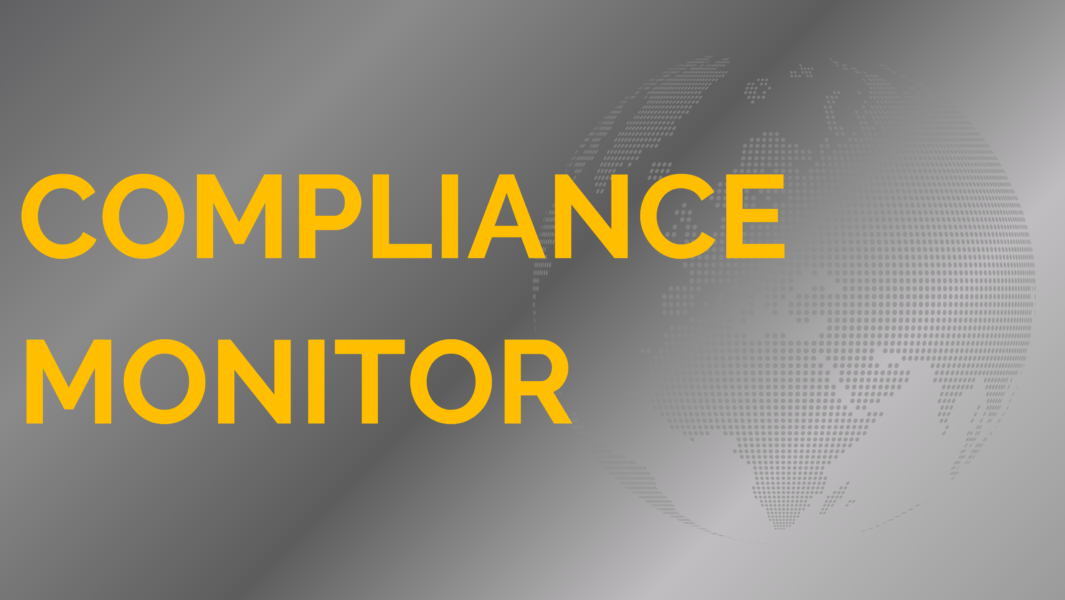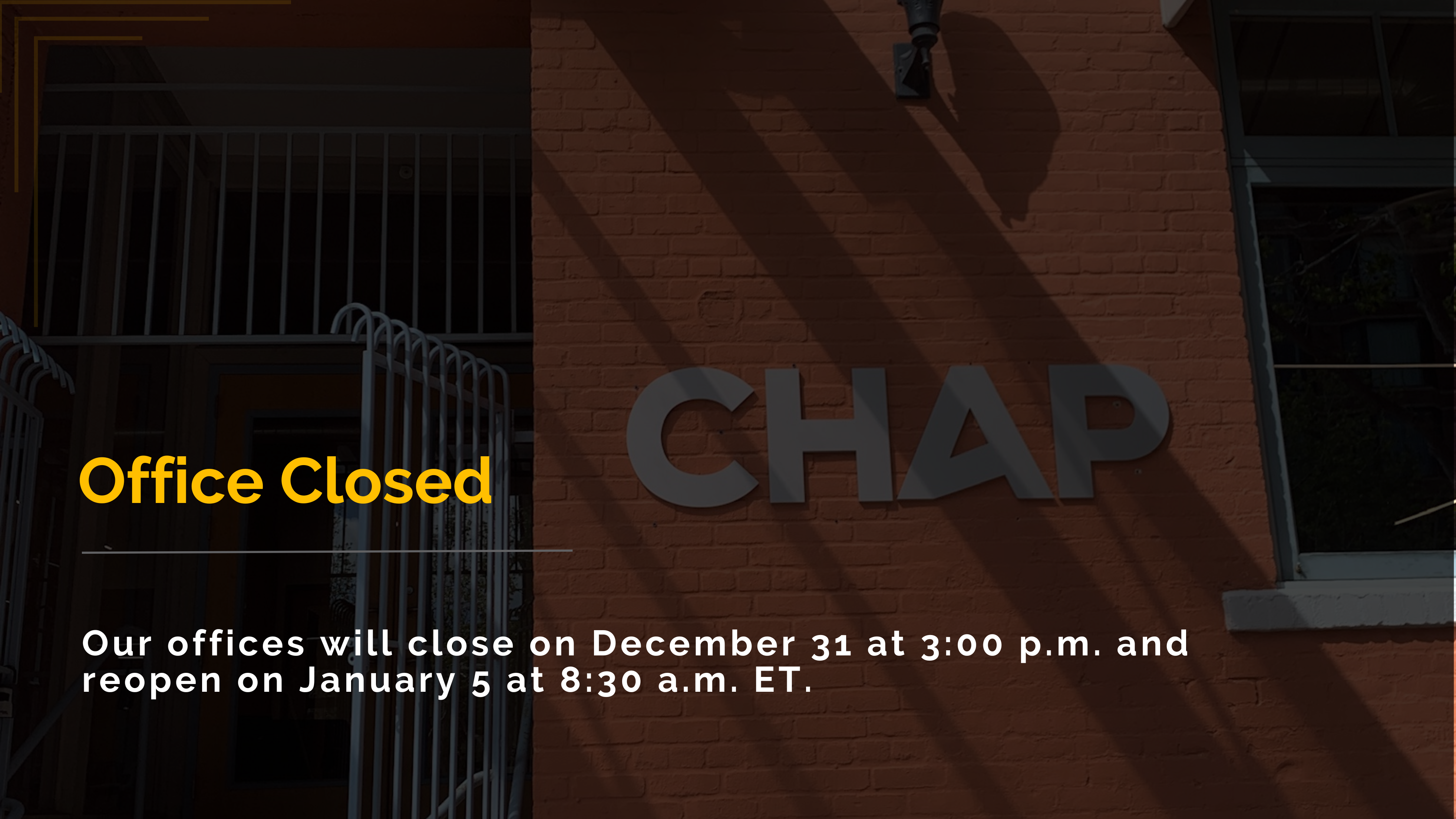
Compliance Monitor (10/28/2024)
CHAP is always seeking resources and insights to enhance the knowledge of partners and customers.
Be sure to download CHAP’s compliance calendars for home health and hospice.
Top Items
Fact Sheet: HHS Continues Taking Action to Increase Access and Supply of IV Fluids Following Hurricane Helene
Following storm damage from Hurricane Helene at Baxter International Inc.’s facility in North Carolina, the U.S. Department of Health and Human Services (HHS) and its subagencies continue taking action to support access to intravenous (IV) fluids, including ensuring restoration of key production sites, protecting products, and opening imports, in partnership with manufacturers, distributors, hospitals, and other stakeholders.
CMS Home Health, Hospice and DME Open Door Forum
The next Home Health, Hospice and DME Open Door Forum has been rescheduled from October 30th, 2024, 2:00pm-3:00pm ET to November 6th, 2pm-3pm ET.
The registration webpage has been updated. Thank you.
Hospice Updates
CMS will host a Hospice technical informational call for Software Vendors and Developers on Thursday, November 21, 2024.
Call-in information is:
Date: Thursday, November 21, 2024
Time: 2:00 to 3:00 p.m. (ET)
Zoom Link:
https://cms.zoomgov.com/j/1611821583?pwd=fyOkLrwUsv8N9SzsmAYOU5PyVPcbaQ.1
This vendor call will cover topics such as:
-HOPE Guidance Manual
-HOPE Data Submission Specifications (V1.00.0) effective October 1, 2025
-iQIES System and Validation Utility Tool (VUT) updates
-Submitted Questions & Answers
Home Health Updates
CMS Posts Change Request – Allowing Home Health (HH) Telehealth Services During an Inpatient Stay
Change Request 13812 modifies the rule to allow home health providers to submit telehealth claims even when their patients are in hospital or SNF care. The change specifically applies to telehealth services that fall under the G0320, G0321, or G0322 Healthcare Common Procedure Coding System codes. These codes are non-payable reporting items and represent attempts by home health agencies to remain in contact with a patient’s caregivers while they are in an inpatient stay. The implementation date is April 7, 2025.
Care Compare Quarterly Refresh – October 2024
The October 2024 quarterly refresh for the Home Health Quality Reporting Program is now available on Care Compare. For this refresh, Home Health (HH) Outcome and Assessment Information Set (OASIS) and HH QRP claims-based measures have been updated. All OASIS and claims-based measures are now based on the standard number of quarters.
The October 2024 refresh will remove two claims-based measures from public reporting:
- Acute Care Hospitalization During the First 60 days of Home Health (ACH)
- Emergency Department (ED) Use without Hospitalization During the First 60 Days of Home Health
The October 2024 refresh also contains an update to the Home Health Quality of Patient Care Star Ratings. The Home Health Within-Stay Potentially Preventable Hospitalization (PPH) measure will replace the ACH measure in the Quality of Patient Care Star Ratings calculations. For more information, see the download section of the HH QRP Star Ratings page (https://www.cms.gov/medicare/quality/home-health/home-health-star-ratings)
Home Health Consolidated Billing: New Physician Specialty Code F6 Excluded
CMS created a new physician specialty code for epileptologists (F6) effective July 1, 2024. This code is excluded from home health consolidated billing for outpatient therapies.
Medicare Administrative Contractors (MACs) will update their systems effective October 1, 2024. They’ll adjust claims processed before October 1, 2024, that you bring to their attention.
More Information:
- Section 20.2.2 Medicare Claims Processing Manual, Chapter 10 (PDF)
NOW AVAILABLE: Screen Positive for Health-Related Social Needs Indicator Confidential Feedback Report for HH, IRF, and LTCH with Educational Webinar and Fact Sheet
On October 15, 2024, the Centers for Medicare & Medicaid Services (CMS) released the new Screen Positive for Health-Related Social Needs (HRSN) Indicator Confidential Feedback Report to Home Health (HH), Inpatient Rehabilitation Facility (IRF), and Long-Term Care Hospital (LTCH).1 This report presents summary information for your patient population on four HRSN data elements: Health Literacy, Need for Interpreter Services, Social Isolation, and Transportation. Results for this initial report are calculated using data from October 1, 2023 – September 30, 2024, and will be updated quarterly based on the most recent 12 months of available data. This report is provider-generated in the Internet Quality Improvement & Evaluation System (iQIES).
To support providers in accessing and understanding this new report, CMS has released an educational webinar recording and the related webinar slides and transcript. We also released a fact sheet that provides an overview of the Screen Positive for HRSN Indicator Confidential Feedback Report. For information on how to generate your report and to access the webinar recording video and related slides, transcript, and fact sheet, please go to the Home Health Quality Reporting Training & Education Webpage
Available – Updated Annual DTC and MSPB Health Equity Confidential Feedback Reports for Post-Acute Care Providers
On October 15, 2024, the Centers for Medicare & Medicaid Services (CMS) updated the two annual post-acute care (PAC) Health Equity Confidential Feedback Reports: The Discharge to Community (DTC) Health Equity Confidential Feedback Report and the Medicare Spending Per Beneficiary (MSPB) Health Equity Confidential Feedback Report. These reports are available to providers in the Home Health (HH), Inpatient Rehabilitation Facility (IRF), Long-Term Care Hospital (LTCH), and Skilled Nursing Facility (SNF) settings. The updated Fall 2024 Health Equity Confidential Reports are based on data from Calendar Year 2022-2023 for HH and from Fiscal Year 2022-2023 for IRF, LTCH, and SNF settings.
The Health Equity Confidential Feedback Reports provide insight on DTC and MSPB measure outcome differences across social risk factors. These reports stratify these two PAC Quality Reporting Program (QRP) measure outcomes by Medicare-Medicaid dual-enrollment status (duals and non-duals), and by patient race/ethnicity (non-White and White patients). This data is meant to provide information to providers about their performance for certain populations who may have been historically disadvantaged. Providers can use the information from these reports to focus their internal quality improvement initiatives aimed at increasing opportunities for all individuals to achieve optimal health outcomes.
For information on how to access these reports via your Internet Quality Improvement & Evaluation System (iQIES) reports folders, please see the following PAC training pages:
All Provider Updates
CMS Announces New Participants in the States Advancing All-Payer Health Equity Approaches and Development (AHEAD) Model
On 10/28/24, the Centers for Medicare & Medicaid Services (CMS) announced that Rhode Island and s sub-section of New York have been selected to participate in Cohort 3 of the States Advancing All-Payer Health Equity Approaches and Development (AHEAD) Model. The Cohort 3 pre-implementation period will begin January 1, 2025.
Under the AHEAD Model, CMS and participating states will work collaboratively to curb health care cost growth; improve population health through investments in primary care; and advance health equity by addressing disparities in health outcomes. State participants for all three cohorts are:
- Cohort 1: Maryland and Vermont (announced July 2024)
- Cohort 2: Connecticut and Hawaii (announced July 2024)
- Cohort 3: Rhode Island and a sub-section of New York
Each state participating in AHEAD will receive a Cooperative Agreements from CMS and will have the opportunity to receive up to $12 million to support model implementation activities over the course of the first 5-6 years of the model.
Additional information about AHEAD can be found on the AHEAD Model webpage, including:
- Frequently Asked Questions, which are updated on a rolling basis.
CDC Recommends Lowering the Age for Pneumococcal Vaccination from 65 to 50 Years Old
Model Factsheet and Model Overview
The CDC Director endorsed the CDC Advisory Committee on Immunization Practices (ACIP) recommendation for lowering the age for pneumococcal vaccination from 65 to 50 years old.
CDC Director Mandy Cohen endorsed the CDC Advisory Committee on Immunization Practices’ (ACIP) recommendation for people 65 years and older and those who are moderately or severely immunocompromised to receive a second dose of 2024-2025 COVID-19 vaccine six months after their first dose. These updated recommendations also allow for flexibility for additional doses (i.e., three or more) for those who are moderately or severely immunocompromised, in consultation with their healthcare provider (a strategy known as shared clinical decision making).
Improving Access during Health Literacy Month
October is Health Literacy Month, and the Centers for Medicare & Medicaid Services Office of Minority Health (CMS OMH) is celebrating by sharing resources to help everyone make informed decisions about their health. Health literacy—the ability to find, understand, and use health information and services—affects nearly every part of our lives, from understanding our health coverage options to making choices about the care and services we need.
Addressing health literacy can help improve health equity. People who understand their healthcare options and how to access them are more likely to make informed health decisions and live longer healthier lives. Using plain language, sharing resources in different languages, and taking time to review information directly with those you serve are all ways you can help improve health literacy in your community. Our Coverage to Care (C2C) resources aim to do this by helping people understand their health coverage and connect to health services. Share C2C and other resources with your community this Health Literacy Month.
No-Pay Medicare Summary Notice Mailing Frequency Changed to Every 120 Days
The frequency of No-Pay Medicare Summary Notices (MSNs) changed from every 90 days to every 120 days effective October 7, 2024. Remind your patients that they can go digital to get their MSNs electronically.
More Information:
HCPCS Public Meeting — November 6–8
Wednesday, November 6 – Friday, November 8, 2024, from 9 am – 5 pm ET
Attend a virtual public meeting for the second biannual 2024 HCPCS coding cycle. Visit HCPCS Level II Public Meetings for more information, including:
- Meeting materials
- Guidelines
CMS Proposes Benefit and Payment Parameters for 2026 Marketplace Qualified Health Plans
October 4: CMS released the 2026 Notice of Benefit and Payment Parameters proposed rule in the Federal Register. The 2026 rule outlines proposed requirements for Qualified Health Plans, including deductibles, out-of-pocket limits, and actuarial value levels, in addition to updating market-wide policies, such as risk adjustment calculations, special enrollment periods, and Marketplace user fees. Details can be found in this fact sheet.
